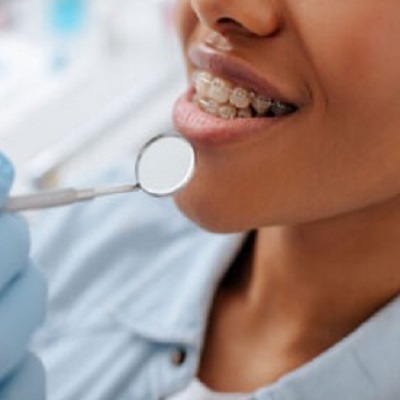When it comes to achieving a healthy, beautiful smile, understanding the relationship between braces and jaw alignment is crucial. Misaligned jaws can lead to various dental issues, affecting not just the appearance of your smile but also your overall oral health. At Best Dental Braces, we recognize the importance of correcting jaw alignment through orthodontic treatment, which is often essential for long-term dental health and comfort. This article explores how braces can improve jaw alignment, the implications of misalignment, and the various orthodontic solutions available.
Understanding Jaw Alignment:
Before diving into how braces impact jaw alignment, it’s essential to understand what jaw alignment entails.
What Is Jaw Alignment?
Jaw alignment refers to the proper positioning of the upper and lower jaws in relation to each other. When the jaws are aligned correctly, your teeth fit together harmoniously, allowing for efficient chewing and speaking. Misalignment can lead to a range of issues, including discomfort and difficulty with oral functions.
Causes of Jaw Misalignment:
Several factors can contribute to jaw misalignment:
- Genetics: Inherited traits can influence jaw size and tooth position.
- Habits: Long-term habits, such as thumb sucking or tongue thrusting, can affect jaw development.
- Injury: Trauma to the jaw can result in misalignment.
- Missing Teeth: Gaps caused by missing teeth can lead to the shifting of adjacent teeth, affecting overall jaw alignment.
The Role of Braces in Correcting Jaw Alignment:
Braces are a vital tool in orthodontics, designed to address various dental issues, including jaw misalignment.
How Braces Work:
Braces consist of brackets, wires, and bands that work together to apply consistent pressure to the teeth over time. This pressure gradually shifts teeth into their desired positions, which can also help align the jaws.
Different Types of Braces:
At [Best Dental Braces], we offer various types of braces tailored to your needs:
Traditional Metal Braces:
These are the most common type of braces, made of stainless steel. They are effective for addressing severe jaw alignment issues and can be used on patients of all ages.
Ceramic Braces:
Ceramic braces work similarly to traditional braces but are made from clear materials, making them less noticeable. They are a popular choice among adults seeking aesthetic options while correcting jaw alignment.
Lingual Braces:
Lingual braces are placed on the back of the teeth, making them virtually invisible. This option is great for those concerned about the appearance of braces while still needing effective jaw alignment correction.
Clear Aligners:
Clear aligners, like Invisalign, are another alternative for correcting jaw alignment. These removable trays gradually shift teeth into place, allowing for discreet treatment.
Benefits of Correcting Jaw Alignment:
Addressing jaw alignment through braces can have a multitude of benefits, extending beyond aesthetics.
Improved Oral Function:
Proper jaw alignment enhances biting and chewing efficiency, reducing strain on the jaw muscles and joints. This can lead to improved digestion and overall health.
Reduced Risk of Dental Issues:
Misaligned jaws can lead to various dental problems, including uneven wear on teeth, gum disease, and temporomandibular joint (TMJ) disorders. Correcting jaw alignment can significantly lower the risk of these issues.
Enhanced Comfort:
Patients with jaw misalignment often experience discomfort, headaches, and jaw pain. Braces can alleviate these symptoms by realigning the jaw and teeth.
Increased Confidence:
A well-aligned jaw contributes to a more attractive smile, boosting self-esteem and confidence in social situations.
What to Expect During Treatment:
Understanding the treatment process can help alleviate any concerns you may have regarding braces and jaw alignment.
Initial Consultation:
The first step is a comprehensive consultation at [Best Dental Braces]. During this visit, your orthodontist will assess your jaw alignment, discuss your goals, and recommend an appropriate treatment plan.
Treatment Duration:
The length of treatment varies depending on the severity of the misalignment and the type of braces used. On average, treatment can take anywhere from 6 months to 2 years.
Regular Check-Ups:
You will have regular appointments to monitor progress and make adjustments. These visits are essential for ensuring the treatment is progressing as planned.
Aftercare:
Once your braces are removed, you may need to wear a retainer to maintain your new alignment. This step is crucial in preventing teeth from shifting back to their original positions.
Alternative Treatments for Jaw Alignment:
While braces are highly effective for correcting jaw alignment, other treatment options may be available.
Orthognathic Surgery:
In severe cases of jaw misalignment, orthodontic treatment may be combined with surgery. Orthognathic surgery can reposition the jaw and create a better alignment, improving both function and appearance.
Oral Appliances:
Certain oral appliances can also assist in correcting jaw alignment. These devices are designed to reposition the jaw or relieve pressure on the jaw joints, often used in conjunction with braces or other orthodontic treatments.
Physical Therapy:
In some cases, physical therapy can help manage symptoms related to jaw misalignment, particularly for those experiencing TMJ disorders. Therapy can strengthen jaw muscles and improve overall function.
Conclusion:
Braces play a crucial role in correcting jaw alignment, significantly enhancing oral health and overall well-being. At [Best Dental Braces], our expert team is dedicated to providing personalized orthodontic care tailored to your specific needs. By choosing braces to address jaw misalignment, you can enjoy improved oral function, reduced discomfort, and increased confidence in your smile. If you're ready to explore your options for correcting jaw alignment, schedule a consultation with us today!





Comments